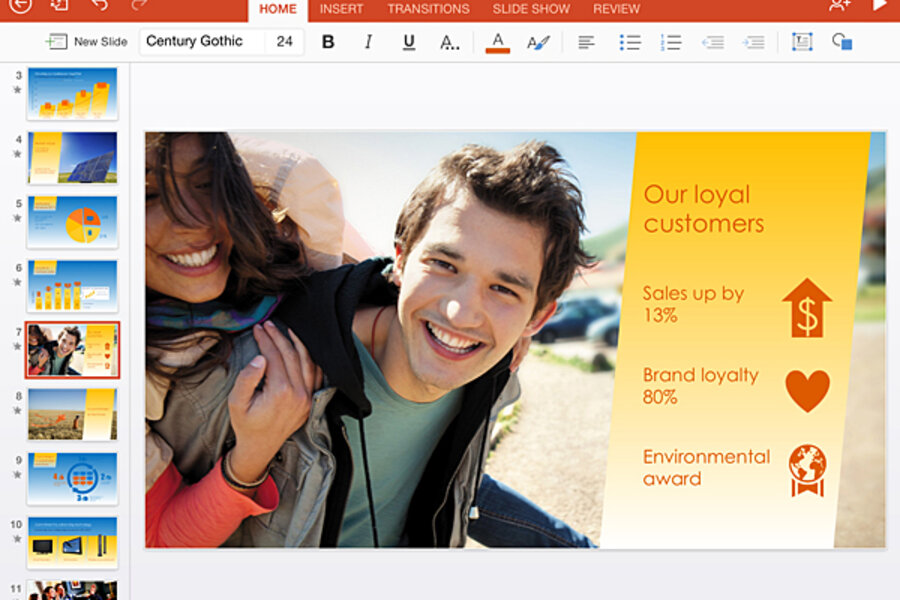Office for iOS shows Microsoft's shifting philosophy
Loading...
Since the Steve Ballmer era, Microsoft has struggled to find its niche in the fast-paced tech world. It has been accused of falling behind small start-ups and failing to create innovative products. But in recent months, Microsoft's new leadership has made changes in an attempt to bring the company back to the forefront of technology.
Microsoft released a new version of its Office suite for the iPhone and iPad Thursday. The software, which includes Word, Excel, and PowerPoint, improves the previous iOS version and update the iPad apps released in March and has already been downloaded 40 million times. The iPad app had all the capabilities of the desktop Office version. But it required a subscription. Now, in a major move, Microsoft is giving its software away for free. The new iPad and iPhone apps allow users to utilize basic features for free and will charge customers for premium features, such as security tools.
"The most striking first impression made by Word, Excel, and PowerPoint on the iPhone is how great they look on the iPhone 6 and iPhone 6 Plus," wrote Wired's Marcus Wohlsen. "On these big, crisp screens, working on documents doesn’t feel like a kludgy compromise anymore. Microsoft’s designers have figured out how to minimize the intrusion of menus without dropping the functionality that desktop users take for granted."
Microsoft is still working on a general version of the app for Android devices, but Android users can download a preview version of the app. The company didn't release a date when it will launch a complete version. Because Android and iOS devices far outnumber Microsoft's mobile operating system, the company's challenge is to create a version of its software for all the different operating systems and devices. Microsoft is trying to circumvent that challenge by developing a Web-based version of the software that can be used on smaller screens, Michael Atella, Microsoft's Office apps product management, told the Associated Press.
"With Office on nearly every device, it’s incredibly important to us that customers have a consistent experience and the ability to do more – anywhere and everywhere," John Case, Microsoft's corporate vice president, wrote in a blog post.
The new apps mark a major shift in priorities for the once device-minded company. Microsoft's CEO Satya Nadella, who took over in February, has said he wants the company to focus on mobile and Web-based products. A much needed change due to the decreasing number of PCs sold. For years customers and businesses have began buying mobile and tablet devices, but Office, one of Microsoft's cornerstone products, wasn't available for these devices.
"The relaunch of the company’s most iconic suite as free software on its arch-rival’s most iconic mobile device marks a turning point," Mr. Wohlsen wrote. "Instead of trying to cram mobile computing into a shape that fits its old model, Microsoft is reshaping itself to fit what mobile computing already has become."
Microsoft has already made a push to enter the cloud storage market with its Office 365, launched in 2013. The product offers unlimited online file storage and updated apps for $7 to $10 a month. The product already has 7 million customers. And this week, Microsoft announced a partnership with Dropbox, a data storage service, to allow documents stored in Dropbox to be easily edited by Microsoft's software.
Mr. Case said he expects these moves to be positive for the company.
"This is not a small change," he told The New York Times.









